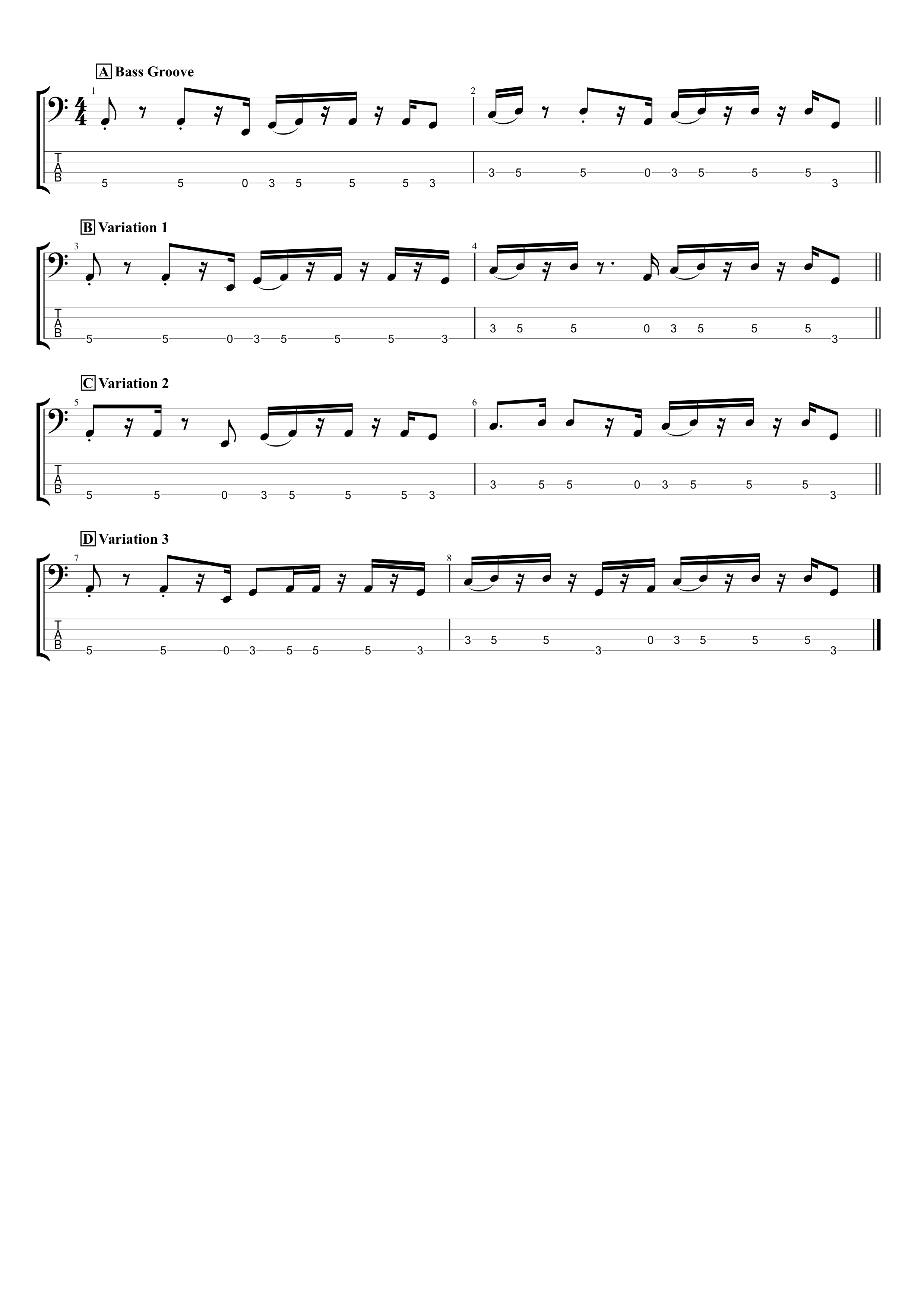How to Vary the Rhythm of Your Bass Grooves – Bass Practice Diary – 7th August 2018
In this week’s video practice diary I’ve been thinking about how to practice rhythmic variations. As bass players we often find ourselves playing repetitive grooves with static harmony. You can make those static grooves more interesting by playing subtle rhythmic variations. Here is how I would practice that.
We’ve all been in the situation where we’ve played a bass groove for a period of time. And during that period of time we’ve started to feel that it’s getting boring, not just for us but for the audience listening to us. It’s a dilemma, because if you change the groove too much it can affect the band and the performance in ways that might not be appreciated. So the key in that situation is to come up with subtle variations. They may be so subtle that your audience doesn’t consciously notice them, but they will still add to a feeling of movement and flow in the music that will prevent it from becoming boring.
How Do You Come Up With Rhythmic Variations?
It’s easy to say that the answer is to come up with subtle variations, but it’s harder to achieve it without becoming repetitive. So I’ve come up with this system for coming up with as many potential rhythmic variations as you can.
You need to start with a groove. You can come up with one of your own or you can use one that you know. I’ve come up with my own in the video to avoid copyright complications. But I did think about doing the video with a famous bass line to help illustrate the idea.
Here is the bass line I’ve used in the video.

The next stage of my process was to come up with a rhythmic variation. I restricted myself to only changing the rhythm of two notes. Because I want my variations to be subtle. I’m not trying to change the whole groove. The variations should sound organic and fit in with the original feel.
The Variations
Here is my first variation.

The last note of the first bar has been moved one sixteenth note later. And the third note of the second bar has been moved one sixteenth note earlier.
If you’re not sure what I mean then check out my lessons on rhythmic subdivisions and eighth and sixteenth note bass grooves.
I then came up with two more variations, I allowed myself to add individual notes and move notes by a single subdivision. But not many because I’m still trying to keep the core elements of the groove.
Here are variations two and three.


Hopefully you can see that this system gives you the potential to come up with a lot of subtle variations for your bass grooves. It even gives you the potential to evolve your grooves into something rhythmically different without ever making an obvious change that an audience would notice.
If the music will allow it, you could keep changing the groove in two places each time you play it. Before long you can build a bass groove that is entirely different without having played an obvious change to the groove.
The Groove With Variations
At the bottom of the page I’ve put the bass groove plus the variations. I’ve demonstrated playing it all together in the video.
When I played it for my wife, who isn’t a musician, she said it sounded good but she couldn’t tell the difference between the variations. That is exactly what I was trying to achieve. Because the variations exist to make the music sound more interesting without it sounding like I’m changing the groove. An audience will respond positively to rhythmic variation, if it’s done well, but they probably won’t consciously be aware of what it is that sounds good.


